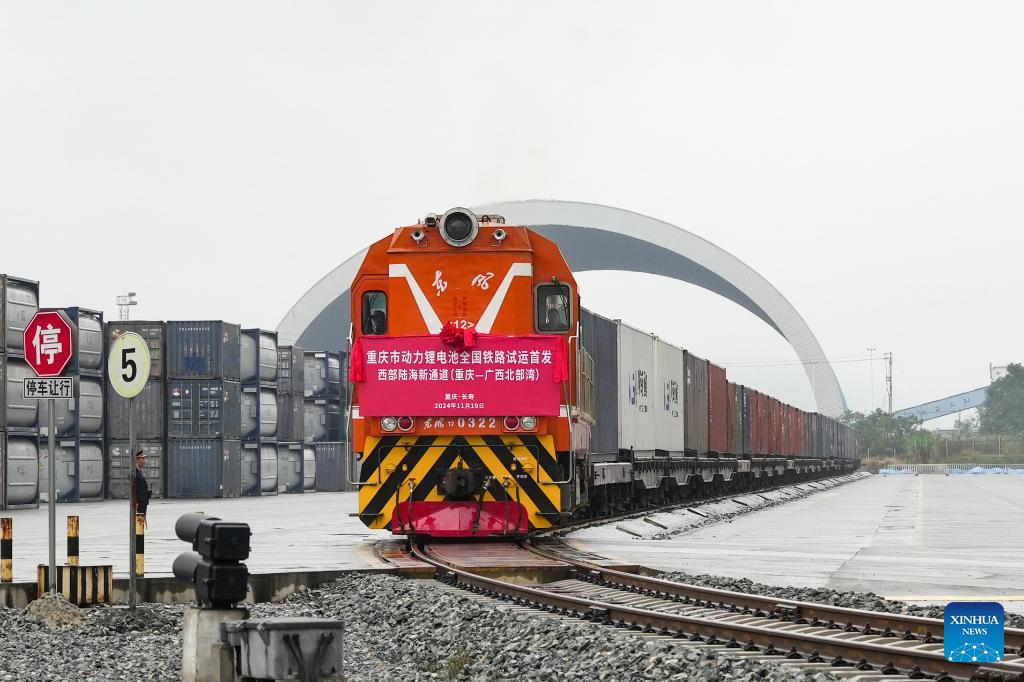Xinhua | November 20, 2024

A train loaded with lithium batteries for traction purposes departs from a train station in southwest China's Chongqing, Nov. 19, 2024. Three trains loaded with lithium batteries for traction purposes departed separately from Chongqing, Guiyang and Yibin on Tuesday, marking the first large scale test run for rail transportation of such batteries in China. A new type of container enhanced with multiple safety measures including smoke sensing and pressure releasing has been deployed to effectively reduce potential risks during transportation. (Xinhua/Zhang Ziyu)
China Railway has conducted its first large-scale trial transportation of lithium batteries for electric vehicles.
On Tuesday, three trains loaded with lithium batteries departed from Chongqing Municipality, Sichuan Province and Guizhou Province, all of which are located in southwest China.
For China, the world's largest producer of lithium batteries, this is a major step forward in the transportation of these vehicle batteries, which are listed as dangerous goods and were previously transported only by sea or road.
The transport of lithium batteries is risky as they may burn or explode if jolted.
"For the trial run, we are using a new type of container designed solely for the transport of lithium batteries. The containers are made of non-combustible materials and equipped with smoke and temperature detectors and venting devices," said Jia Ping, deputy general manager of China Railway Chengdu Group Co., Ltd.
Rail transport will facilitate the export of Chinese lithium batteries as it has a larger capacity than road transport and is faster than sea transport, Jia said.
The trial has been welcomed by Chinese battery giant CATL. "This trial rail transportation is further recognition of the safety performance of domestic lithium batteries," said Liu Jie, who is in charge of CATL's supply chains and logistics.
"Rail transport opens up a new channel for the efficient transportation of lithium batteries. It will boost our exports by reducing logistics costs and improving logistics efficiency," said Liu.



